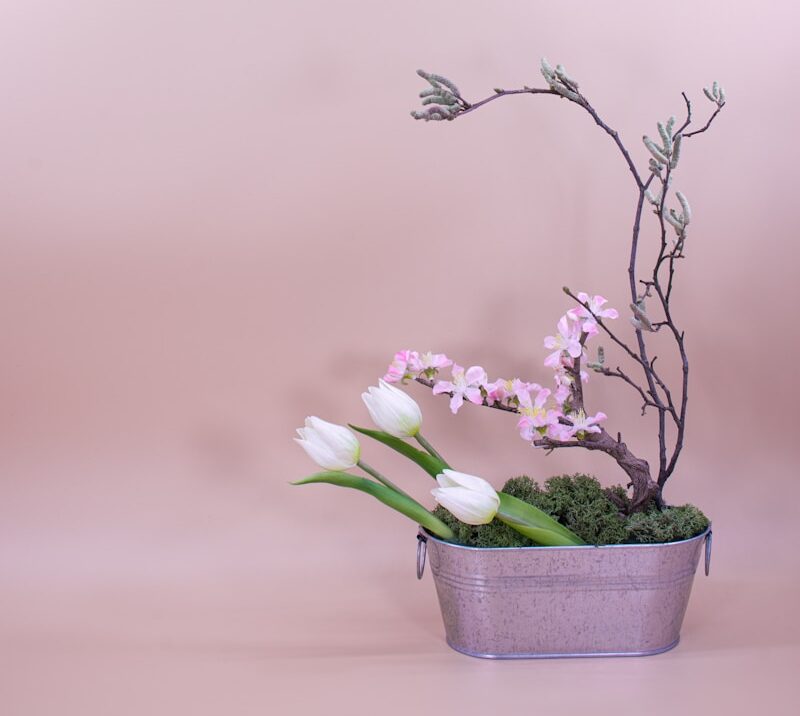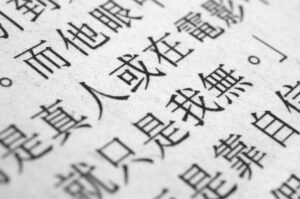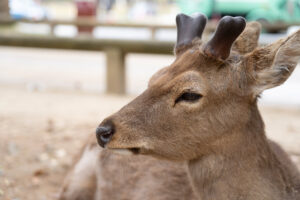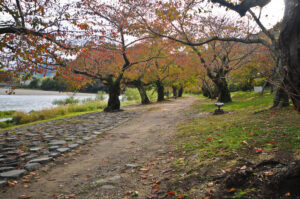Ikebana, the Japanese art of flower arrangement, represents a profound cultural tradition that merges aesthetics with spiritual symbolism. Dating back to ancient times, Ikebana holds a revered place in Japanese culture, embodying principles of simplicity, harmony, and respect for nature.
Overview of Ikebana
Ikebana, meaning “living flowers,” is not merely a decorative art form but a disciplined practice rooted in philosophical and spiritual principles. Unlike Western flower arrangements, which often prioritize fullness and symmetry, Ikebana emphasizes minimalism and the elegant use of negative space. Each arrangement is meticulously crafted to evoke a specific mood or theme, reflecting the seasons and the impermanence of life.
Historical Context of Japanese Flower Arranging
The origins of Ikebana can be traced back to early Japanese history, influenced by the ritualistic use of flowers in Shinto and Buddhist ceremonies. The tradition gained prominence during the Muromachi period (14th to 16th centuries) when ikebana arrangements adorned tea ceremonies and Zen Buddhist practices. Notably, the renowned tea master Sen no Rikyū integrated Ikebana into the aesthetics of tea ceremonies, underscoring its spiritual dimensions.
Significance of Ikebana in Japanese Culture
Ikebana is deeply ingrained in Japanese cultural identity, embodying core principles such as harmony with nature (shizen) and the pursuit of tranquility (seijaku). The art form reflects broader cultural values of humility, restraint, and appreciation for the ephemeral beauty of flowers. Historically, Ikebana was practiced by aristocrats and samurai as a form of meditation and artistic expression.
In contemporary Japan, Ikebana continues to flourish as both a traditional art and a source of creative inspiration. It is practiced by individuals of all ages and backgrounds, from dedicated masters to hobbyists seeking moments of mindfulness amidst the bustle of modern life.
Ikebana represents more than just arranging flowers; it embodies the essence of Japanese aesthetics and spirituality. Its enduring appeal lies in its ability to capture the fleeting beauty of nature and evoke profound emotions through minimalist compositions. In subsequent sections, we will delve deeper into the principles, techniques, and evolving interpretations of Ikebana, exploring how this ancient art form remains relevant and resonant in today’s world.
Historical Background
The historical evolution of Ikebana traces back to ancient Japan, where the art form emerged from spiritual and ceremonial practices involving the use of flowers in religious rituals.
Origins of Ikebana
The roots of Ikebana can be found in the offering of flowers at Buddhist altars. In Japan’s early history, Buddhist monks would arrange flowers as part of their devotional practices, imbuing the act with symbolic significance. Over time, these arrangements evolved beyond religious settings and became a refined art form appreciated for its aesthetic and philosophical dimensions.
During the Heian period (794-1185), Ikebana began to take shape as a distinct artistic practice. This era saw the emergence of tatebana (standing flowers), an early form of Ikebana characterized by tall, upright compositions that expressed reverence for nature and the divine.
The Muromachi period (1336-1573) marked a significant turning point for Ikebana, with the rising influence of Zen Buddhism. Under Zen aesthetics, Ikebana became closely aligned with principles of simplicity, asymmetry, and the appreciation of imperfection (wabi-sabi). It was during this time that Ikebana started to be integrated into tea ceremonies, particularly by tea masters like Sen no Rikyū, who emphasized the importance of harmony and restraint in floral arrangements.
Key Influences and Schools
Sen no Rikyū’s contributions laid the groundwork for the development of various Ikebana schools, each with its own distinctive style and philosophy. The Ikenobō school, founded in the 15th century, is one of the oldest and most traditional Ikebana schools, focusing on naturalistic arrangements that reflect seasonal changes. Another notable school, Sogetsu, emerged in the 20th century and introduced innovative approaches, incorporating unconventional materials and emphasizing creative expression. The Ohara school, founded in the late 19th century, is known for its landscape-oriented arrangements that evoke a sense of space and depth.
These influential figures and Ikebana schools contributed to the diversification and enrichment of the art form, ensuring its continuity and adaptation across different periods of Japanese history. Ikebana’s evolution continues to be shaped by contemporary artists and practitioners who reinterpret its principles in response to modern aesthetics and sensibilities.
Principles of Ikebana
The principles of Ikebana encapsulate a profound appreciation for simplicity, balance, and harmony, reflecting broader Japanese aesthetic values and philosophical concepts.
Minimalism and Simplicity
At the core of Ikebana is the principle of minimalism, which emphasizes the beauty of simplicity and the art of omission. Unlike Western floral arrangements that often fill space with abundant blooms, Ikebana celebrates negative space (ma) as an essential element. Ma refers to the space between flowers and branches, which is intentionally left empty to create a sense of calm and elegance. This deliberate use of negative space allows the viewer to appreciate the intrinsic qualities of each element within the arrangement.
Focus on Asymmetry and Balance
Ikebana also prioritizes asymmetry over symmetry, reflecting the asymmetrical balance found in nature. By arranging elements off-center and in unexpected compositions, Ikebana captures the dynamic interplay between contrasting forms and textures. The deliberate placement of materials—such as a single flower leaning to one side or a branch extending outward—creates visual interest and evokes a sense of movement within the arrangement.
The concept of balance (hikime no sei) in Ikebana is not merely about achieving physical equilibrium but also about harmonizing contrasting elements to evoke a deeper emotional response. Each component of the arrangement—whether it’s a flower, a leaf, or a branch—contributes to the overall balance and unity of the composition.
Through the principles of minimalism, negative space, asymmetry, and balance, Ikebana practitioners seek to convey profound messages and evoke contemplation. The arrangement becomes a reflection of the artist’s sensitivity to nature and their ability to capture fleeting moments of beauty.
Moreover, Ikebana principles extend beyond the aesthetic realm; they embody deeper philosophical ideals such as mindfulness, humility, and the transient nature of existence. By practicing Ikebana, individuals cultivate an awareness of their surroundings and develop a profound connection with the natural world.
In the next section, we will delve into the significance of harmony (wa) and the respect for materials (shinzen) in Ikebana, further exploring how these principles shape the art form’s expressive potential and enduring appeal.
Techniques of Ikebana
The techniques of Ikebana encompass a range of traditional approaches and specialized tools that are integral to creating harmonious and expressive floral arrangements. Let’s explore the key techniques and tools used in Ikebana:
Basic Structures
Ikebana encompasses various basic structures or styles, each with its own aesthetic and technical considerations. Some common styles include:
- Moribana: This style involves arranging flowers in a shallow container with a pinholder (kensan) to secure the stems. Moribana arrangements are known for their dynamic use of depth and perspective.
2. Nageire: In this style, flowers are inserted into a tall vase without the use of a pinholder. Nageire arrangements often exhibit a sense of spontaneity and naturalness, with stems gracefully cascading within the container.
3. Free Style: As the name suggests, free-style Ikebana allows for creative expression without strict rules. Artists have the freedom to experiment with unconventional materials and compositions, often emphasizing abstract or sculptural forms.
Creating a simple Ikebana arrangement involves careful consideration of line, form, and balance. A step-by-step guide may include selecting appropriate materials, conditioning plant materials, and arranging them in a deliberate manner that respects the principles of Ikebana, such as asymmetry and negative space.
Tools and Equipment
Ikebana practitioners use specialized tools that facilitate precise and controlled arrangement techniques:
Kenzan: Also known as a flower frog, a kenzan is a spiked metal base used to hold plant materials in place within a container. It allows for flexibility in positioning stems and ensures stability in the arrangement.
Hasami: Hasami refers to scissors or shears used for cutting and trimming plant materials. Ikebana scissors are designed with sharp, fine blades that enable precise cuts to enhance the overall aesthetics of the arrangement.
Precision and craftsmanship are paramount in Ikebana, where meticulous attention to detail elevates the art form. Each tool serves a specific purpose in shaping and manipulating plant materials to achieve desired forms and textures. Ikebana tools are not merely functional but are also considered extensions of the artist’s creative expression.
By mastering these techniques and utilizing specialized tools, Ikebana artists can transform humble plant materials into captivating compositions that evoke the beauty of nature and inspire contemplation. The combination of technical skill and artistic sensibility distinguishes Ikebana as a unique and revered form of floral artistry.
Contemporary Interpretations
The art of Ikebana has evolved over time, embracing modern adaptations and global influences while retaining its essence rooted in Japanese aesthetics and philosophy. Let’s explore the contemporary interpretations of Ikebana:
Evolution of Ikebana
In recent decades, Ikebana has experienced a transformation, adapting to changing cultural and artistic landscapes. Modern practitioners have introduced innovative approaches that blend traditional techniques with contemporary sensibilities. This evolution reflects a broader trend of cultural exchange and globalization, with Ikebana gaining popularity beyond Japan’s borders.
Ikebana’s role in contemporary art and design has expanded significantly, with artists integrating floral arrangements into installations, sculptures, and conceptual artworks. The minimalistic and meditative qualities of Ikebana resonate with contemporary audiences seeking mindfulness and connection with nature amidst urban lifestyles.
Innovation and Creativity
Contemporary Ikebana practitioners are pushing boundaries by experimenting with unconventional styles, materials, and techniques. They explore new ways to interpret Ikebana, infusing it with personal expression and cultural diversity. Examples of innovative Ikebana styles may include:
Minimalist Ikebana: Emphasizing simplicity and negative space, minimalist Ikebana strips away excess to highlight the essence of form and line.
Sculptural Ikebana: Some artists create Ikebana arrangements that resemble abstract sculptures, using plant materials to evoke dynamic movement and texture.
Botanical Installations: Ikebana installations in public spaces and art galleries transform environments, blurring the line between floral art and spatial design.
Exploration of new materials and techniques is another hallmark of contemporary Ikebana. Artists integrate non-traditional elements such as metal, glass, and recycled materials into their compositions, challenging conventional notions of floral design. By embracing experimentation and embracing sustainability, contemporary Ikebana practitioners contribute to the ongoing evolution of this ancient art form.
Through these innovative approaches, Ikebana remains relevant in the modern world, captivating audiences with its timeless beauty and profound contemplative qualities. As Ikebana continues to evolve, it continues to inspire creativity, mindfulness, and a deeper appreciation for the art of floral arrangement.
Ikebana stands as a timeless art form that embodies Japan’s rich cultural heritage and aesthetic sensibilities. Throughout its history, Ikebana has evolved from humble beginnings as a ritualistic practice into a sophisticated art form celebrated worldwide.
Ikebana’s Enduring Legacy
The enduring legacy of Ikebana is rooted in its profound connection to nature and the principles of minimalism, harmony, and respect for materials. Across centuries, Ikebana has served as a medium for expressing reverence for the natural world and celebrating the beauty of impermanence.
Invitation to Explore Ikebana as a Form of Personal Expression
Ikebana offers individuals a unique opportunity to engage in mindful creativity and self-expression. Practicing Ikebana encourages contemplation and introspection, allowing artists to convey emotions and narratives through floral arrangements. Whether you are a seasoned practitioner or a beginner, Ikebana invites you to explore the subtle art of harmonizing natural elements with artistic vision.
In today’s fast-paced and digital-centric world, Ikebana holds particular relevance as a source of tranquility and mindfulness. The practice of Ikebana encourages a pause in the hectic rhythms of daily life, fostering a deeper connection to nature and promoting mental well-being. Furthermore, Ikebana’s emphasis on sustainability aligns with contemporary values of eco-consciousness and responsible consumption.
Moreover, Ikebana’s adaptability and innovation have allowed it to resonate with diverse audiences globally. Its integration into contemporary art, design, and lifestyle underscores its enduring appeal and relevance in shaping cultural landscapes.
In essence, Ikebana transcends mere floral arrangement; it is a meditative practice that celebrates the beauty of simplicity and invites us to appreciate the fleeting moments of life. As we navigate an increasingly complex world, Ikebana reminds us of the profound beauty that can be found in the mindful arrangement of flowers and the art of living in harmony with nature.
Discover the transformative power of Ikebana and embark on a journey of creative exploration—one that celebrates tradition while embracing the boundless possibilities of artistic expression in the modern age.








